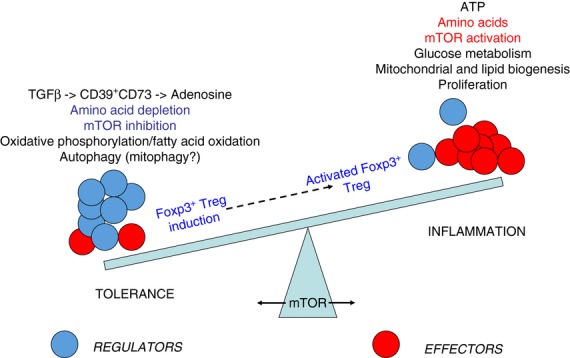Figure 4.

Mammalian target of rapamycin (mTOR) at the fulcrum of the immunoregulatory balance. The immune system has to maintain a delicate balance between the inflammation required to protect the body from infection while limiting the potential pathology and risk of autoimmunity. Tolerance is maintained primarily by ensuring that the relative frequency of regulatory T (Treg) cells (blue) is in excess of effector T cells (red), but when an inflammatory response is required, the generation of effector T cells is favoured. The decision to preferentially generate effector T cells rather than Treg cells is dependent on the availability of glucose and essential amino acids, and this activates mTOR, which then coordinates the switch in metabolism from primarily fatty acid oxidation to glucose metabolism. Conversely, the local depletion of essential amino acids from the tolerogenic microenvironment inhibits mTOR and encourages induction of Treg cells over effector cells. Committed induced Treg cells may, however, still be able to respond to mTOR activation by proliferating and/or increasing their suppressive function if they are required to limit the development of any inflammatory pathology.
